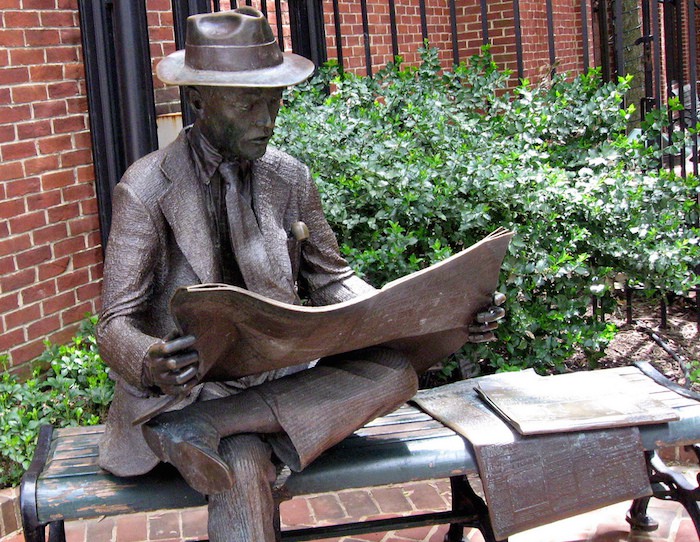
Jennifer Preston spent the past few months visiting newsrooms around the country and found that, “while they have made headway toward a digital transformation, they wanted support to accelerate that.”
When The New York Times’ Innovation Report was leaked last year, it was influential and inspiring for many journalists who read it. Most newsrooms aren’t the Times, but when Preston, Knight’s VP for journalism (and a 19-year Times veteran) visited regional news organizations, the report came up repeatedly.“Organizations like The New York Times and The Washington Post can scale nationally and internationally,” Preston said. “But that’s not the case for most local and regional news organizations.” Still, she thought how useful it would be if there could be an Innovation Report-like playbook, widely disseminated and publicly available, for smaller newsrooms across the country to tap into — “a report that provides templates, lessons, tools, and best practices that major metros and local and regional organizations can adopt.”
The Knight Foundation (which, full disclosure, is also a funder of Nieman Lab) announced this week that it will be funding a major project to gather and share this knowledge. The Dallas Morning News, the Philadelphia newspapers, and the Miami Herald will work with Temple University’s School of Media and Communication to make their newsrooms more digital- and mobile-friendly. The “Knight-Temple Table Stakes Project” is supported by a $1.3 million grant from Knight.
“These three newsrooms will serve as a learning laboratory for other, similar newsrooms,” Preston said.
Temple has assembled a team to work with the papers, including Arlene Morgan, assistant dean for external affairs at Temple’s School of Media and Communication, and Douglas K. Smith, a management consultant and author. Morgan and Smith have worked together previously, creating the Punch Sulzberger Program at the Columbia Journalism School for news executives who want to hone their management skills.
“We hope to unlock the obstacles — aside from financial — that are hampering newspapers from developing a framework that can look to a future without newsprint,” Morgan wrote on the Knight Foundation’s blog.
One of the project’s goals to produce research and information that can be used by other news organizations. Tom Rosenstiel, executive director of the American Press Institute, and Jeff Sonderman, deputy director there, will lead that part of the project, which Rosenstiel called “a natural extension of our recent work on news audiences, data and analytics, mobile and social trends, and cultural change.”In addition, Temple will produce research for schools. “We’re very interested in what the whole project tells us about what we should be teaching the journalists of the future,” said David Boardman, dean of the School of Media and Communication (and longtime top editor at The Seattle Times), “and we plan to work on and share that with other communications and journalism schools.”
Representatives from the participating news organizations agreed that one of the biggest benefits of the program is the structure and accountability it provides. “Discipline is the key here,” said Sandra Shea, director of strategic partnerships for Philadelphia Media Network and editorial page editor for the Philadelphia Daily News. “There are going to be deadlines and deliverables, and I think that makes a very big difference in the work we’re going to be doing.”
The group will meet in November, February, and April, once each in Philadelphia, Miami, and Dallas. Regular progress reports, tools, and templates will be released as the project continues, and Knight expects to work with another round of news organizations in the spring.
“We’re already heading down this path,” said Robyn Tomlin, managing editor of The Dallas Morning News. “This is going to be adding some jet fuel to help us rocket faster.”
A previous version of this article did not include Sandra Shea’s full title.